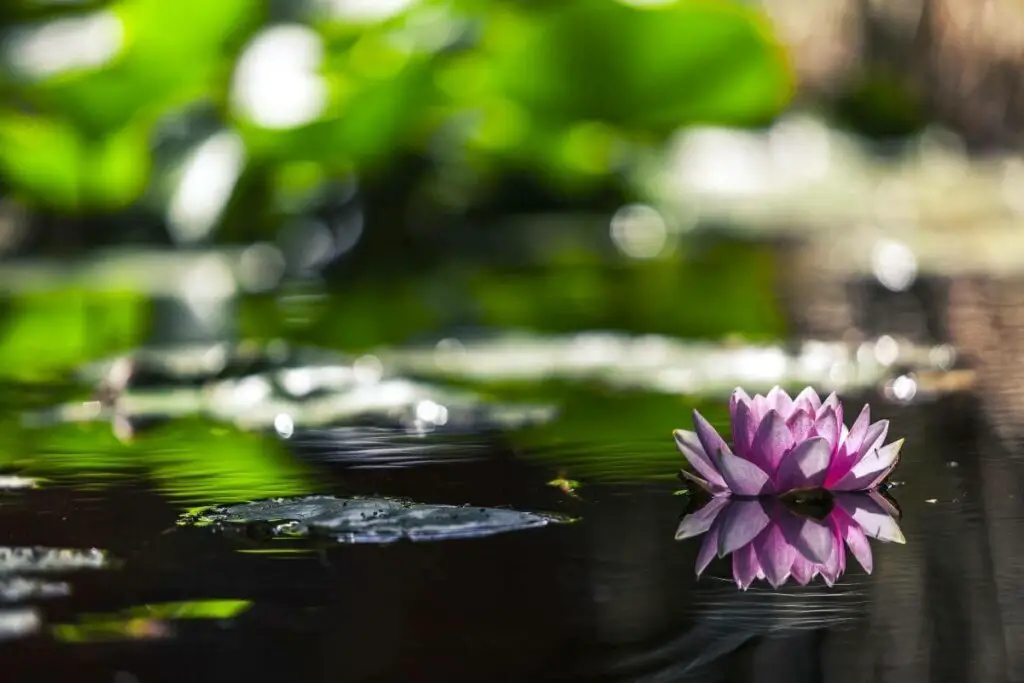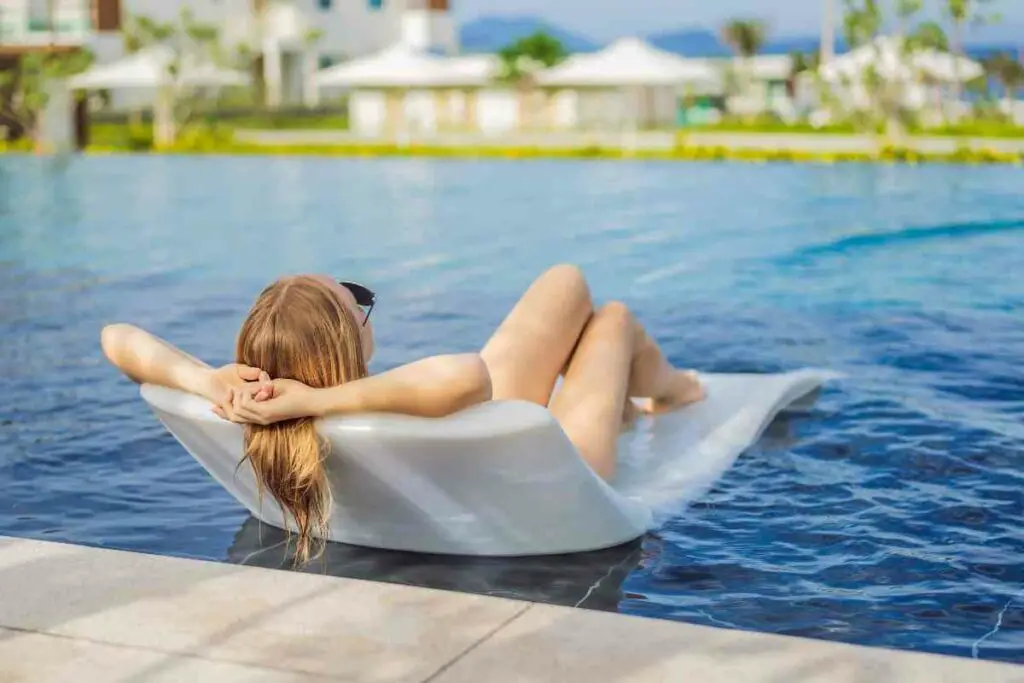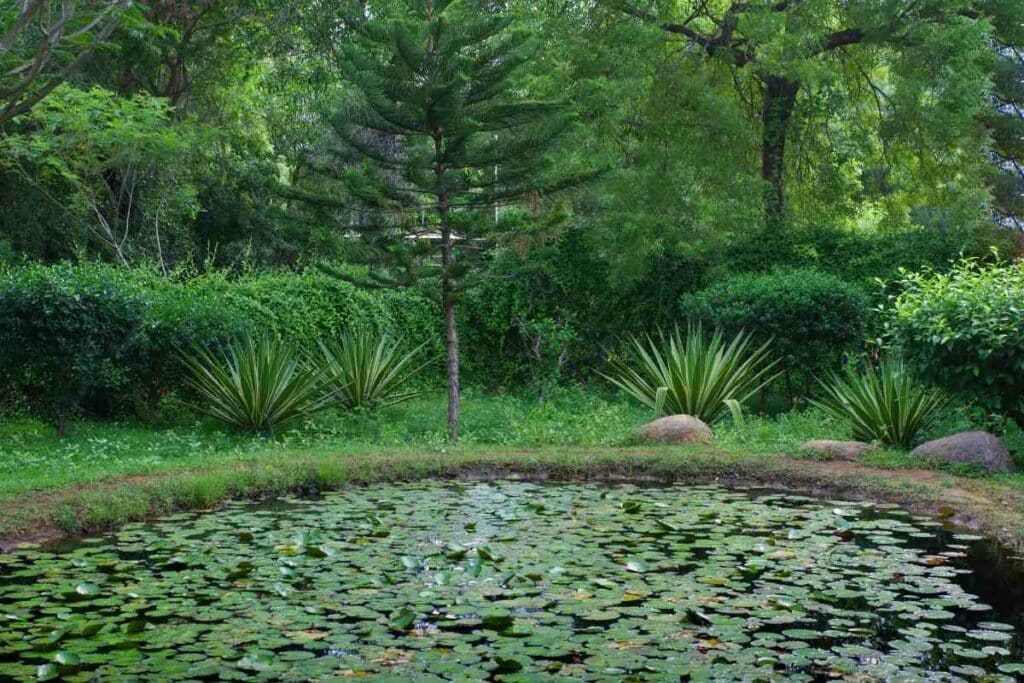If you are a pond owner, you’ve probably wondered before, “can you have too many plants in a garden pond?”
While plants can be incredibly beneficial for a pond, too many can be the opposite (even causing ‘fish kill’).
So, how many plants are okay, and what kinds of plants are the best for a pond?
Also, what should you do if you have too many plants in your pond?
Let’s take a look!
Remember to Include an Oxygenator plant or pump in any pond where fish live. You can build a wildlife pond but that wouldn’t have fish living and feeding. It would be full of insects, frogs, and other wild species.
A suitable pond pump that we like is the Pond Guy air pump. Which is available from Amazon. Link here!

How Many Plants Can I Have In My Pond?
You’ve heard great things about having plants in a pond. There are so many kinds to choose from, you may come to wonder, ‘can you have too many plants in a garden pond?’
This is a fair – and a wise – question. Plants require plenty of water, O2, and nutrients in order to survive.
If too much of this is going toward the plants, other pond critters may go without, and suffer!
So, how many plants should you have in your pond?
We recommend no more than 60% of your pond be made up of plants. This will ensure that there are enough nutrients to go around. This is especially important if you have fish and/or other pond critters.
Otherwise, they may end up going without. So, what should you do if you think you have too many plants in your pond?
If you have too many plants in your pond, it could be time to remove some of them. This can be done easily with most, simply by pulling them up roots-first.
Make sure not to leave the roots behind, or many will simply regrow!
The exception to the rule is wildlife ponds where there are no live fish. These ponds have less water surface area and can be as high as 70% plant based.
What Plants Are the Best For Ponds?
Here are some of the easiest pond plants to care for, and – in the proper amounts – are ideal for a pond inside or around the pond area.
They can add not only beauty but also provide shelter for any pond critters you may have – let’s take a look!
Creeping Jenny
If you’re looking for a plant that won’t overgrow in your pond, Creeping Jenny will do the trick! This is a beautiful plant that grows along the edges of ponds, in a sprawling fashion.
It does not take as many nutrients as some plants from the water, since it takes root in the soil. It’s beautiful and practical, and instead of overcrowding your pond, it will provide decorative edging.
It’s also known to be a lovely accompaniment to a waterfall, as it will cascade alongside the water!
Blue Iris
Blue iris grows along the shallow edges of ponds, helping to keep out predators (such as birds, that might prey on fish, frogs, etc.).
It’s an excellent plant for just about any pond, providing plenty of beauty and color. Not only that, but if you’d like help keeping your pond clean, blue irises should do the trick!
They’ll provide a backdrop that’s both aesthetic and practical. They also don’t tend to overgrow, so that there aren’t too many plants in your garden pond.
They’re a great choice for any nature lover!
Mosaic Plant
Mosaic plants are named for their unique and exceptional appearance: the leaves go together as if some sort of mosaic.
These are lovely plants that won’t take up too much space, and which have much to offer!
They are also quite good at helping to consume waste and keeping the pond clean in general.
Water Lettuce
Water lettuce is quite popular among pond-owners, and for good reason. It provides beautiful foliage across the top of the water, while long, feathery roots clean the water.
Water lettuce helps to prevent excess algae and creates shade and shelter for fish to hide in. If you’re looking for a good, easy-to-manage pond plant, water lettuce should do the trick!
Cardinal Flower
If you have plenty of plants in your pond, yet would still enjoy more plants, you can always try cardinal flowers.
These grow in the soil and are pond edging (rather than growing right inside the pond). They have lovely, colorful flowers that are known to attract both butterflies and hummingbirds.
Among many pond owners, these flowers have been a real winner!
Sweet Flag
Sweet flag is a slow-growing plant, so you won’t have to worry about too many plants in your garden pond. Instead, it will gradually spread from its pot.
This is a plant that’s best placed in the soil around the edge of your pond, or submerged about 4 inches in a pot.
From there, it will create a lovely groundcover!
Hornwort
Part of the issue with pond crowding is that the water can get dirty. When it comes to keeping your pond clean, hornwort will have your back.
This is a vibrant, grassy plant that will make your pond not only lovelier but also healthier!
Conclusion
So, if you were wondering, ‘can you have too many plants in a garden pond?’ your answer is yes. Sometimes, plants do overcrowd a pond.
Fortunately, if you stick to no more than 60% plants, this shouldn’t be an issue. There are also certain plants that take up less room/grow more slowly than others, like those listed above.
- Guide To Desert Plants: Types, Adaptations, And Landscaping Tips
- Philodendron Care, Varieties, And Aesthetic Home Arrangements
- Potato Bugs: Identification, Impact, And Control
- What Do Squirrels Eat? A Gardener’s Guide to Squirrel Diets
- Understanding Chipmunks In Your Garden: Behavior, Diet, And Tips For Gardeners
- What Should I Put in the Bottom of My Wildlife Pond?
- Backyard Oasis With Pool: Creating a Relaxing Retreat in Your Backyard
- How to Find Pond Leak (Quick Method to Find the Leaks)
- Pool Ledge Lounger – Complete Buyers Guide
- Do Garden Ponds Overflow When It Rains
- How To Fill A Pond With Water (Complete Guide)






